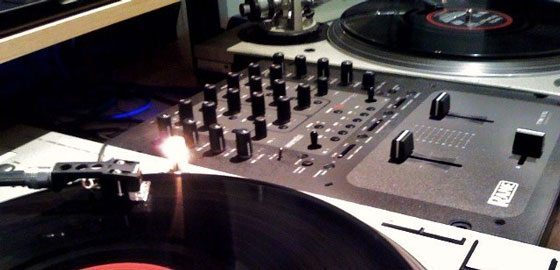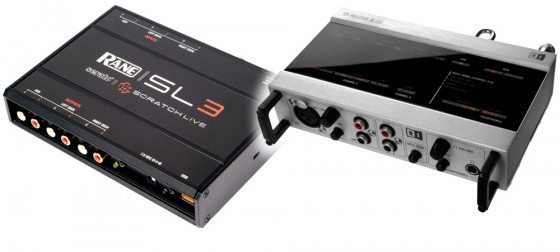CONTROLLER IMPLEMENTATION

Serato has midi implementation but it’s very limited. It’s easier to use than Traktor’s midi-window thanks to their direct midi learn utility but that also greatly limits what you can control. Basic midi mappings are available but very simple modifications to those mappings are not. One example would be the new effects in Scratch live. I would like to map a button to turn on the FX only while I am holding down a button but right now it only supports a toggle action with no way to modify the behavior. For those that just want to map a cue points or other simple commands this is really not a problem but for the more adventurous DJ’s you’re going to hit a dead end quite rapidly.
 Traktor’s biggest strength (imo) lies in their midi-mapping interface. Almost anything you can imagine a controller doing is possible within Traktor. This makes actually creating midi-mappings somewhat daunting but those that brave this territory will find rich spoils await. Many of you may have no interest in ever touching a midi mapping but this system benefits everyone- by enabling others (like this site) to invent new ideas in DJing and share them with you. The VCI-100SE is the greatest example of this. We literally re-invented the way a controller should work without ever building one and that creation is accessible to anyone in the world through a single import button.
Traktor’s biggest strength (imo) lies in their midi-mapping interface. Almost anything you can imagine a controller doing is possible within Traktor. This makes actually creating midi-mappings somewhat daunting but those that brave this territory will find rich spoils await. Many of you may have no interest in ever touching a midi mapping but this system benefits everyone- by enabling others (like this site) to invent new ideas in DJing and share them with you. The VCI-100SE is the greatest example of this. We literally re-invented the way a controller should work without ever building one and that creation is accessible to anyone in the world through a single import button.Enabling the creative power of the crowd through API’s and flexible midi mappings will mean better products and new ideas. In our opinion, all companies should embrace this concept and tap into the creative ideas of their users.
STABILITY
 Serato has a well-earned reputation of stability. They have consistently prioritized performance over features, which have earned them the respect and dedication from many DVS djs around the world. Beta Tests and extra features aside it remains that way today.
Serato has a well-earned reputation of stability. They have consistently prioritized performance over features, which have earned them the respect and dedication from many DVS djs around the world. Beta Tests and extra features aside it remains that way today.
After putting the trials of Final Scratch behind them- Traktor re-engineered their system from the ground up to make it rock solid. The results are significant- consistent stability and performance for the live DJs that rely on their software night after night.
The Rub: With each company trying to take over the other company’s territory- they are both basically meeting squarely in the middle of the performance and features balance. Traktor has greatly streamlined their system to make it easier to use resulting in a better product with less features. Serato on the other hand has been adding features, which has built out the offerings but effected stability to some degree. Both are good to go for a solid crash free set but neither is exactly bug free.
POPULARITY

You have to admit that the opinions of others are a big sway in purchases. If all your friends drive Fords, it’s going to be tough to go with Chevy. In general its safe to say that Serato is very popular in the US and Traktor has a solid hold on the market in Europe. These generalizations aside both groups are making in-roads into their competitions territory.
Based on search volume, interest in Traktor in picking up in the US and is now almost equal to search traffic for Serato:
Popularity will have a big effect on your experience with a system. Serato, for example, is ubiquitous in almost all nightclubs in the US. Walk up with your laptop and headphones, plug into the pre-installed Serato box and you are ready to go- no fumbling with cables or awkward switchovers. This is a big incentive for DJs that want convenience. If Traktor manages to re-engineer the TTM-57SL and make it a Traktor approved sound card they could eliminate that problem in one quick move but that’s not likely to happen any time soon.
BUILT IN FX

With Traktor totally dominating this space for so long, Serato finally sucked it up and added effects to their software. To make up for the midi-mapping situation they even threw in a nice nod to this site and controllerism by adding super knobs to the interface. Customize and control multiple effect parameters with one single knob- way cool. Interface features aside though, the effects themselves still leave a fair amount to be desired. The usual suspects, delay, filter, and beat crush are all their but its going to take a while to perfect the sounds and get everything working really well.


NI has been engineering stellar FX in Reaktor for many years so this is one space that they excel in. While the FX are harder to use right out of the box thanks to their legacy effects interface- the actual sounds and potential of the effects in Traktor are definitely the best on the market. With contributions from people like Tim Exile and their Reaktor team expect more mind bending effects combos in the future that will sonically re-arrange any tune instantly.
MULTIPLE DECKS

Traditionally a 2-deck software, Serato recently announced the addition of 2 more decks to their software. To access these decks, however you must purchase the associated hardware (the standard SL1 box will not work with more than 2 decks). For 3 decks, you will need the new SL3 box and to get all 4 you need to purchase the $2500 Rane 68 mixer.
Having 4 decks is one thing. Actually using them all is another problem entirely. Serato still does not offer any real automatic beat matching or beat grids, which means you have to keep all 4 pieces of music in time manually- quite the task indeed. The new Ableton bridge implementation may solve this problem to a degree. In theory, running an Ableton session in a deck would allow you to keep multiple loops running in the background without worrying about train wrecks.

Traktor has had 4 decks for several years and thanks to their internal mixing paradigm- you can use all 4 without the need to extensive external mixing hardware. Traktor’s real strength however is in their beat gridding and automatic beat matching system, which can very effectively keep multiple pieces of music in time for you. While some may call this cheating- we think its just common sense. Manually beat-matching multiple loops live is dangerous, time-consuming and does nothing for the crowd. I would prefer the piece of mind and extra time to do other more enjoyable activities.
For those that want to keep it real without the danger- You can also go half and half by manually beat matching 2 songs and then keeping the extra 2 decks locked to one of those 2 tracks automatically.
FEATURES
Instead of a full blow by blow feature comparison. Here are a few of the more important points of differentiation.
SOUND QUALITY
Sound Quality is a very subjective beast, so I am going to stay clear of making any pronouncements and just let you know what I have heard from other professional Djs. The SL1 was notoriously “crunchy” and many Djs that did side by side sound comparisons with Traktor’s audio 8 said that the NI hardware outperformed Rane’s audio interface. The new Sl3 interface with its higher sample rates seems to have vastly improved the sound quality but some Dj’s still swear that Traktor “sounds” better. This is hard to quantify, but we can tell you that the audio 8 and audio 4 are slightly louder than the scratch live interfaces.
A note from our favorite benefactor ” Dr. Reality Check“
Kids- With regards to sound quality- you need to keep in mind that your deaf- they are drunk and the sound system is in mono and distorted. In this kind of environment subjective listening tests go out the window.
BOTTOM LINE
Both systems have their strengths and weakness so it’s better to pick a platform that’s a good fit for your needs. Traktor now makes a tool that converts Serato libraries into their format making it easier to try both, and I would not be surprised if Serato soon does the same.
For electronic music djs that want access to multiple decks and a flexible auto sync system across multiple decks- Traktor is going to be hard to beat. For the 2-deck party DJ that wants simplicity and ease of use – its clear why Serato remains the popular option with hip-hop and party DJs in the United States. For controllists, the field is starting to get slightly more level but Traktor’s effects and midi implementation is still in the lead.
At the end of they day, we don’t care what you use to play music- as long as the dance floor is rocking.





No comments:
Post a Comment